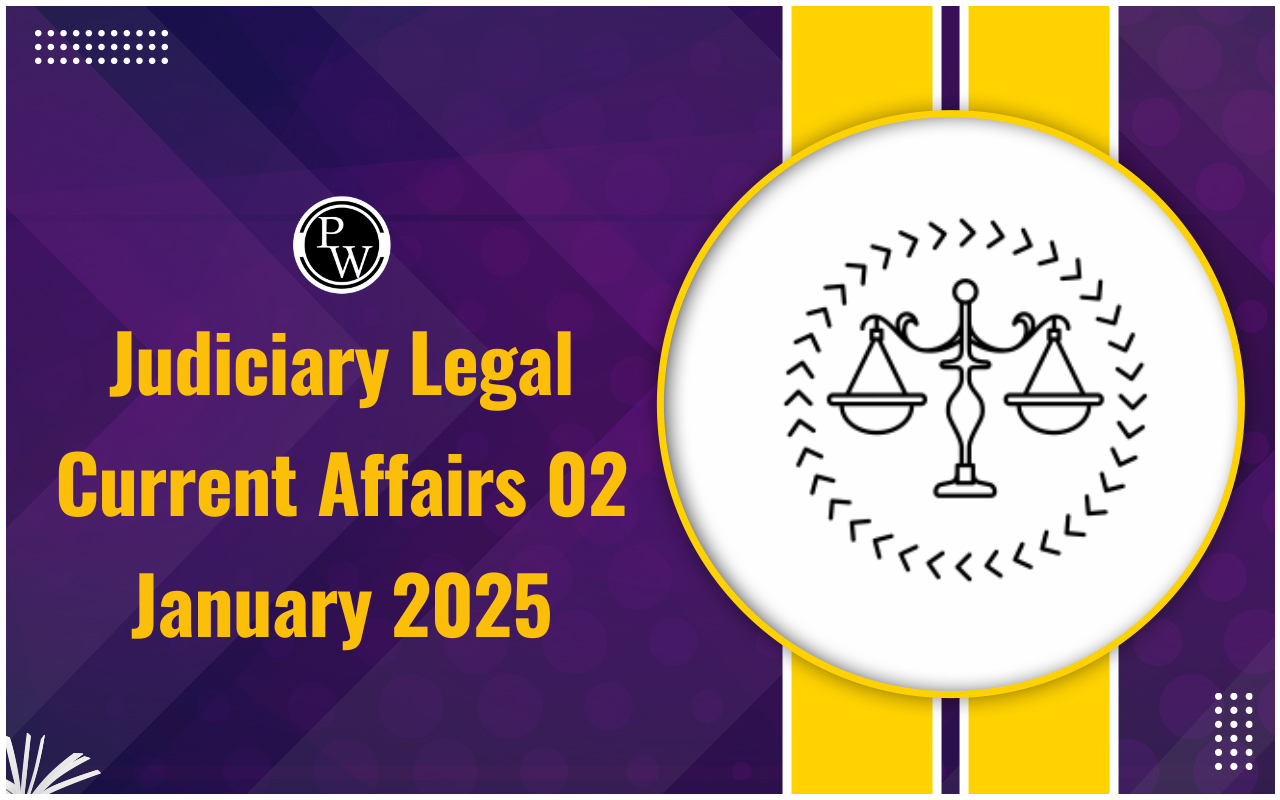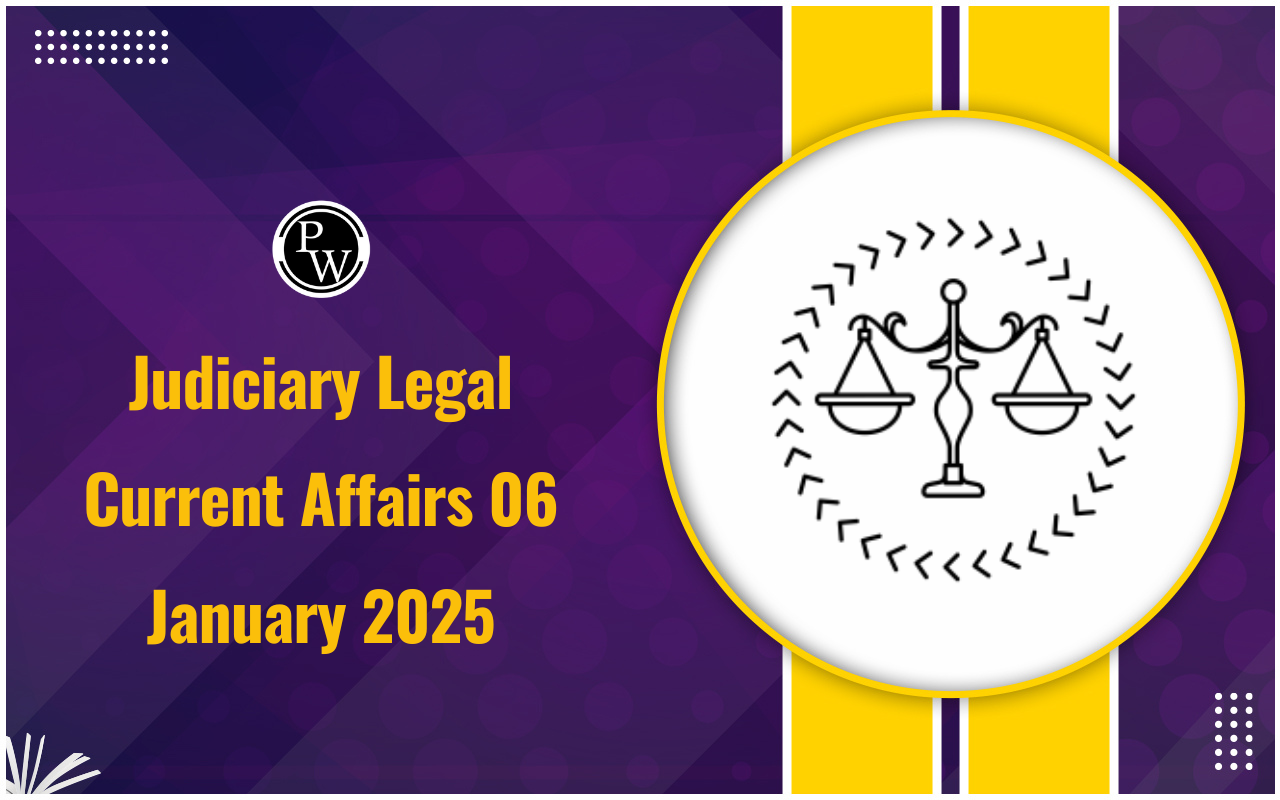
Delhi Sultanate: The Delhi Sultanate was a prominent Muslim kingdom in northern India, reigning from the 13th to the 16th century. Established by the military campaigns of Muʿizz al-Dīn Muḥammad ibn Sām (Muhammad of Ghūr) and his lieutenant Quṭb al-Dīn Aibak, the Sultanate became a powerful force through key victories and strategic expansions. This era saw significant rulers like Sultan Iltutmish and ʿAlāʾ al-Dīn Khaljī, who expanded the Sultanate's territories and fortified its influence. Despite challenges, including Mongol invasions and internal strife, the Delhi Sultanate played a crucial role in shaping India's history. In this article you’ll get the detailed history, significance, maps, and notable rulers of this fascinating period.
History of the Delhi Sultanate
The Delhi Sultanate was a major Muslim sultanate in northern India from the 13th to the 16th century. It was established largely due to the military campaigns of Muʿizz al-Din Muḥammad ibn Sām (Muḥammad of Ghur) and his lieutenant Quṭb al-Din Aibak between 1175 and 1206. Key victories at the battles of Taraōrī in 1192 and Chandawar in 1194 solidified their control. The early Ghurid rulers in India maintained political ties with their homeland (now in present-day Afghanistan) until Sultan Iltutmish (1211–36) firmly established Delhi as the capital. Iltutmish successfully defended the Ghurid territories against rivals and withdrew from Mongol contact by the 1220s. He also secured control over major urban centers in North India, which helped keep the Rajput chiefs in check. After Iltutmish’s death, a period of internal conflict ensued, followed by stability under Sultan Ghiyāth al-Din Balban (1266–87). During Balban's reign, Delhi mainly defended against Mongol threats and took precautionary measures against the Rajputs.The Establishment of the Delhi Sultanate
The Delhi Sultanate was founded by Qutb-ud-Din Aibak, a former Turkish slave of the powerful ruler Muhammad Ghori. The turning point came in 1192 when Aibak defeated the last Hindu ruler of Delhi. This victory paved the way for a new era in Indian history. After Muhammad Ghori's death in 1206, Qutb-ud-Din Aibak declared himself the Sultan of Delhi. He established the Slave Dynasty, also known as the Mamluk Dynasty. This marked the beginning of the Delhi Sultanate, a period that lasted for about three centuries. The Delhi Sultanate saw the rule of several dynasties, each contributing to the cultural and political landscape of India. These dynasties included the Khilji, Tughlaq, Sayyid, and Lodi dynasties. Throughout its existence, the Delhi Sultanate played a crucial role in shaping the region's history, economy, and architecture.Significance of the Delhi Sultanate
Under the Khalji dynasty (1290–1320), the Delhi Sultanate expanded its power significantly. ʿAla al-Din (1296–1316) conquered Gujarat and Rajasthan and subdued the Hindu kingdoms of southern India. His forces also repelled significant Mongol invasions. Muḥammad ibn Tughluq (1325–51) tried to establish a second capital at Daulatabad in the Deccan, but the local Muslim aristocracy eventually set up the Bahmanī sultanate in 1347. His successor, Fīrūz Shah Tughluq (1351–88), did not attempt to reclaim the Deccan. The sultanate's power waned after the invasion by Timur (Tamerlane) in 1398–99, which devastated Delhi. The Sayyid dynasty (c. 1414–51) saw the sultanate reduced to a regional power. However, the Lodī dynasty (1451–1526) revived its dominance until the Mughal leader Bābur defeated them at the First Battle of Panipat in 1526. After a brief resurgence under Shēr Shah of Sūr, the Mughal Empire, led by Humāyūn and later Akbar, ultimately absorbed the Delhi Sultanate following the Second Battle of Panipat in 1556.Features of Delhi Sultanate
The Sultanate period in India marked a significant shift with the introduction of Islamic law and culture, leaving a profound impact on Indian society. Let's delve into the key aspects that defined this era.- Patronage of Islamic Institutions: Under the rule of various dynasties, including the Slave, Khaliji, Tughlaq, and Lodi, Islamic scholars were supported, and mosques, madrasas, and religious institutions were constructed across the empire. This patronage played a crucial role in spreading Islamic teachings and fostering cultural exchange.
- Language and Literature: Another noteworthy development was the adoption of Persian as the official language of the court. This shift not only influenced administrative matters but also left a lasting impact on Indian literature and culture, enriching it with Persian influence.
- Dynastic Successions: Throughout the Sultanate period, India witnessed the rise and fall of several dynasties, each with its distinct characteristics. The Slave dynasty, followed by the Khaliji, Tughlaq, and finally the Lodi dynasty, shaped the political landscape of medieval India.
- Key Rulers and Reforms: Notable figures like Alauddin Khaliji and Muhammad bin Tughlaq implemented administrative and military reforms, aiming to centralize authority and expand territorial boundaries. While Alauddin Khilji is remembered for his effective reforms, Muhammad bin Tughlaq's ambitious projects, such as the capital transfer and currency changes, faced challenges and sparked unrest.
- Challenges and Decline: Despite the efforts of rulers like Bahlul Khan Lodi, internal conflicts and external invasions plagued the later years of the Sultanate period. These challenges ultimately led to the downfall of the Lodi dynasty, paving the way for the emergence of the Mughal Empire.
Decline of Delhi Sultanate
The Delhi Sultanate marked a significant chapter in Indian history, paving the way for the later Mughal Empire. Despite its eventual decline, this period left an indelible mark on Indian culture and society. Let's delve into the factors contributing to the decline of the Delhi Sultanate and its lasting influence.- Emergence of the Mughal Empire: The Delhi Sultanate's decline opened the door for the rise of the Mughal Empire, established by Babur in 1526. This transition marked a pivotal moment in Indian history, as power shifted from one dynasty to another.
- Shaping Indian Culture: Despite its eventual downfall, the Delhi Sultanate played a crucial role in shaping Indian culture. It introduced Islamic customs, traditions, and architectural styles to the Indian subcontinent, blending them with indigenous influences to create a unique Indo-Islamic culture.
- Development of Indo-Islamic Architecture: One of the enduring legacies of the Delhi Sultanate is its contribution to architecture. During this period, magnificent mosques, forts, and tombs were constructed, showcasing a fusion of Islamic and Indian architectural styles. Notable examples include the Qutub Minar and the Alai Darwaza, which continue to stand as testaments to the Sultanate's architectural prowess.
- Rise of Sufism: The Delhi Sultanate era witnessed the emergence of Sufism, a mystical Islamic tradition. Sufi saints played a significant role in spreading Islam in India through their teachings of love, tolerance, and spiritual enlightenment. Their influence transcended religious boundaries, attracting followers from diverse backgrounds and contributing to the rich tapestry of Indian culture.
- Impact on Indian History: Despite its eventual decline, the Delhi Sultanate left an indelible mark on Indian history. It witnessed the rise and fall of several dynasties, each leaving its distinct imprint on the socio-political landscape of the subcontinent. The legacy of the Delhi Sultanate continues to resonate in India's cultural heritage, serving as a reminder of the enduring interplay between different civilizations.
Delhi Sultanate Period
The Delhi Sultanate Period, spanning from the 13th to the 16th century, marks the onset of Muslim rule in the Indian subcontinent. This era, characterized by a series of Muslim dynasties ruling from Delhi, holds immense significance in Indian history, shaping the cultural and societal landscape of the region.- Establishment and Expansion: The Delhi Sultanate was established by Qutb-ud-Din Aibak in 1206, a former slave of Muhammad Ghori, the ruler of Afghanistan. Following Ghori's demise, Aibak ascended as the first Sultan of Delhi until his death in 1210. He was succeeded by his slave-turned-successor, Iltutmish, who further expanded the Sultanate's territories and consolidated its authority.
- Cultural Diversity: Despite being predominantly Muslim, the Delhi Sultanate embraced cultural and religious diversity. Hindus and other non-Muslims were allowed to practice their faith and uphold their customs. This inclusive approach fostered a vibrant cultural milieu, blending Islamic and Indian traditions.
- Art, Architecture, and Literature: The Sultanate period witnessed remarkable achievements in art, architecture, and literature. Magnificent structures like mosques, tombs, and palaces adorned the landscape, characterized by intricate designs and ornate embellishments. Iconic landmarks such as the Qutub Minar stand as enduring legacies of this era. Additionally, Persian and Urdu poetry flourished, with renowned poets like Amir Khusro leaving an indelible mark on literary traditions.
- Challenges and Decline: The Delhi Sultanate faced numerous challenges, including invasions by Mongol forces and internal power struggles. These external and internal pressures weakened the Sultanate's grip, leading to its eventual decline by the 16th century.
- Legacy and Impact: Despite its challenges, the Delhi Sultanate Period left a profound impact on Indian culture and society. It marked the beginning of Muslim rule in India, ushering in a period of cultural fusion and artistic excellence. The patronage of art, architecture, and literature during this era laid the foundation for the rich cultural heritage of the subcontinent.
Delhi Sultanate Most Notable Rulers
The Delhi Sultanate, a medieval Muslim state spanning the 13th to 16th centuries, marked the onset of Muslim rule in India. Its legacy resonates through Indian culture, politics, and society. Among its rulers, several stand out for their significant contributions and impact. Let's explore these notable figures in Indian history:- Qutb-ud-Din Aibak (r. 1206-1210): A Turkish slave who ascended to become the first Sultan of Delhi, Aibak established the Slave dynasty. He laid the foundation of Delhi as the capital city and erected enduring monuments like the Qutub Minar and the Quwwat-ul-Islam mosque.
- Iltutmish (r. 1210-1236): Succeeding Aibak, Iltutmish expanded the Delhi Sultanate's reach, annexing territories like Bengal and Gujarat. A patron of the arts, he embellished Delhi with architectural marvels, including the iconic Qutub Minar.
- Razia Sultan (r. 1236-1240): Razia Sultan, daughter of Iltutmish, made history as the sole female ruler of the Delhi Sultanate. Despite facing opposition from conservative nobles, she displayed remarkable governance skills, though her reign was cut short by rebellion.
- GhiyasudDin Balban (r. 1266-1287): Rising during a turbulent period, Balban stabilized the Sultanate by reforming administration and military. He centralized power, diminishing noble influence, and enforced strict court etiquette.
- AlaudDin Khilji (r. 1296-1316): Khilji expanded the Sultanate's borders, venturing into southern India and modern-day Pakistan. His patronage of the arts left a mark, but his ruthless rule, notably against the Rajputs, earned notoriety.
- Muhammad bin Tughlaq (r. 1325-1351): An eccentric ruler, Tughlaq's reign was marked by ambitious but failed projects. His attempts at relocating the capital and currency reforms led to discontent and rebellion, casting his rule into chaos.
- Firuz Shah Tughlaq (r. 1351-1388): Firuz Shah Tughlaq's reign saw notable public works and architectural endeavors. Despite his benevolence and patronage of the arts, political instability and rebellion marred his rule.
Delhi Sultanate Dynasties
The Delhi Sultanate, spanning from the 13th to 16th centuries, marked the advent of Muslim rule in India. Comprising five major dynasties, each left a distinctive imprint on Indian history, shaping its culture, politics, and society. Let's journey through the dynasties of the Delhi Sultanate and their enduring legacies:- The Slave Dynasty (1206-1290 CE): Founded by Qutb-ud-Din Aibak, a Turkish slave, this dynasty established Muslim rule in Delhi. Aibak's successor, Iltutmish, expanded the empire's territories and introduced administrative reforms, including a standardized currency and provincial governance.
- The Khilji Dynasty (1290-1320 CE): Jalal-ud-Din Khilji, a former general, seized power from the Slave Dynasty, followed by his nephew, Alauddin Khilji, a formidable military commander. Alauddin's conquests stretched from Afghanistan to the Bay of Bengal, and he implemented innovative administrative measures, including market regulations and espionage networks.
- The Tughlaq Dynasty (1320-1412 CE): Ghiyas-ud-Din Tughlaq established this dynasty, known for its religious tolerance and patronage of the arts. However, Muhammad-bin-Tughlaq's eccentric policies, such as the failed capital relocation to Daulatabad and token currency system, led to economic turmoil.
- The Sayyid Dynasty (1414-1451 CE): Khizr Khan founded this dynasty, focusing on stability and cultural patronage. Notable ruler Muhammad Shah's reign was characterized by piety, religious tolerance, and support for artistic endeavors.
- The Lodi Dynasty (1451-1526 CE): Bahlul Khan Lodi, a Lahore governor, overthrew the Sayyids, establishing the last dynasty of the Delhi Sultanate. Sikandar Lodi's reign saw administrative reforms, revenue systems, and cultural patronage, yet faced challenges from regional kingdoms and the impending Mughal invasion.
Delhi Sultanate Architecture: A Blend of Indian and Islamic Styles
The Delhi Sultanate era, spanning from 1206 to 1526 in India, marked a period of remarkable architectural innovation. During this time, a unique style emerged, blending elements of both Indian and Islamic traditions. Let's delve into the fascinating world of Delhi Sultanate architecture and its enduring legacy.- Fusion of Styles: Delhi Sultanate architecture reflects a harmonious fusion of Indian and Islamic influences. Muslim rulers from Central Asia introduced new construction techniques and materials, seamlessly integrating them with indigenous styles.
- Notable Monuments: The period saw the construction of numerous monumental structures, including mosques, tombs, palaces, and forts. These buildings showcased intricate carvings and patterns on their facades, crafted from locally abundant red sandstone and white marble.
- Iconic Examples: Among the most iconic examples of Delhi Sultanate architecture is the Qutub Minar, a towering minaret in Delhi. Standing at 73 meters tall, it boasts exquisite carvings of Islamic calligraphy alongside Hindu motifs like lotus flowers and elephants, symbolizing the blending of cultures.
- Jama Masjid: Another masterpiece is the Jama Masjid, a grand mosque in Old Delhi commissioned by Mughal emperor Shah Jahan. With its red sandstone and white marble facade adorned with intricate calligraphy and geometric patterns, it stands as a testament to the opulence of the era.
- Tombs and Mausoleums: The period also witnessed the construction of elegant tombs and mausoleums, honoring the memory of sultans and their families. The Tomb of Ghiyasudin Tughlaq, with its simple yet graceful red sandstone structure, exemplifies this trend.
- Palaces and Forts: Palaces and forts served as the seat of power for the sultans, with the Red Fort in Delhi being a prime example. Built by Shah Jahan, it features stunning red sandstone architecture, including the iconic Diwan-i-Am and Diwan-i-Khas.
- Enduring Legacy: Delhi Sultanate architecture continues to inspire awe and admiration, serving as a testament to the creativity and ingenuity of its builders. These structures stand as proud reminders of India's rich cultural heritage and serve as sources of inspiration for architects worldwide.
Delhi Sultanate FAQs
What was the Delhi Sultanate?
Who were the key rulers of the Delhi Sultanate?
How did the Delhi Sultanate expand its territory?
What challenges did the Delhi Sultanate face?
What is the significance of the Delhi Sultanate in Indian history?










